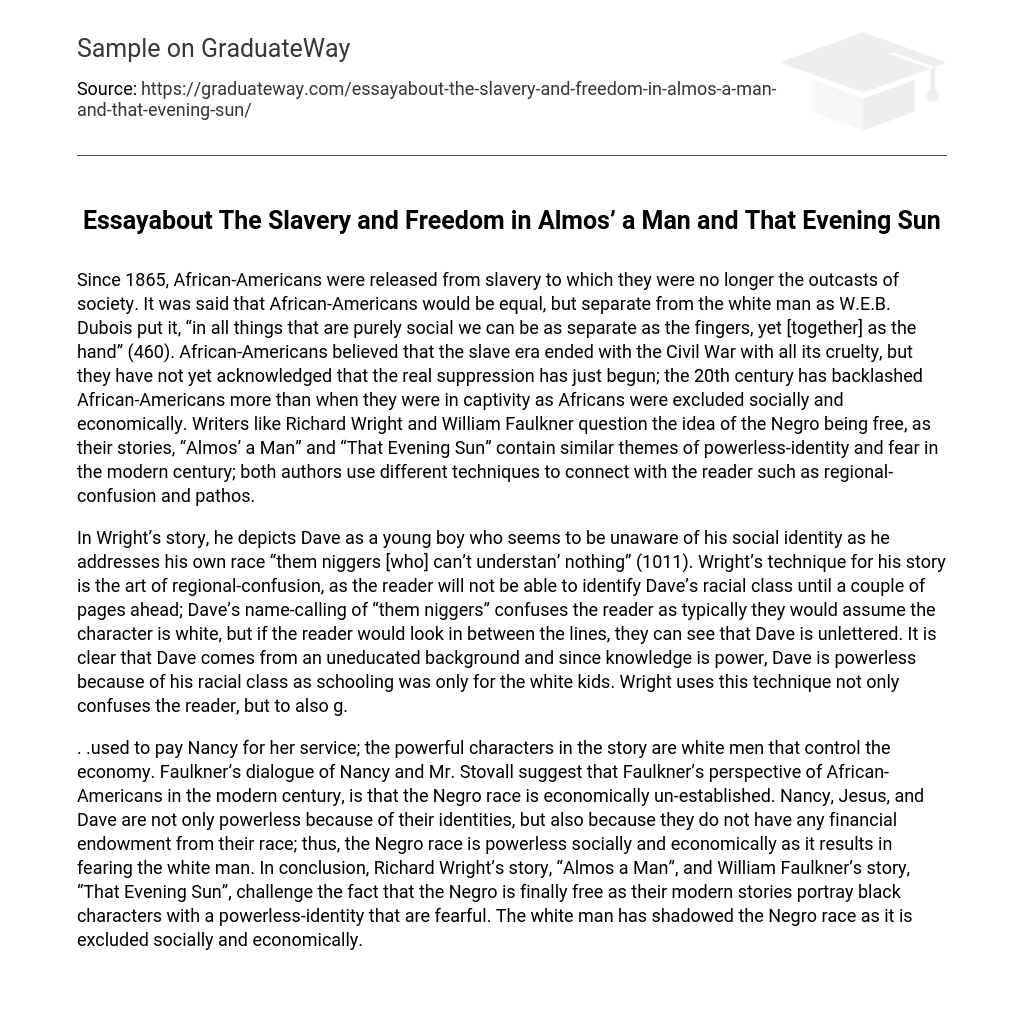Despite the abolition of slavery in 1865, African-Americans still faced segregation and were not granted true equality. W.E.B. Dubois described this ongoing separation as being “as separate as the fingers, yet [together] as the hand” (460) in all social aspects. In the 20th century, African-Americans experienced increasing exclusion from society and the economy. Richard Wright and William Faulkner explored the idea of freedom for African-Americans in their works “Almos’ a Man” and “That Evening Sun,” focusing on themes like powerlessness, identity, and fear in modern times. Both authors used different techniques to engage readers, including regional confusion and pathos.
In Wright’s story, he presents Dave as a young boy who appears to be unaware of his social identity. Dave refers to his own race as “them niggers [who] can’t understan’ nothing” (1011). Wright employs the technique of regional-confusion in his story, making it difficult for the reader to determine Dave’s racial class until several pages later. The fact that Dave uses derogatory language towards “them niggers” initially confuses the reader, as they would typically assume the character is white. However, by reading between the lines, it becomes evident that Dave is uneducated. It is clear that Dave comes from an uneducated background, and as knowledge is power, his racial class renders him powerless due to the limited schooling available to non-white children. By employing this technique, Wright not only confuses the reader but also emphasizes the oppressive nature of racial disparities.
The text suggests that in Faulkner’s story, the powerful characters who control the economy are white men. This highlights Faulkner’s perspective on African-Americans in the modern era, indicating that he sees them as economically disadvantaged. Nancy, Jesus, and Dave are not only powerless due to their identities, but also because they lack financial support from their race. This results in the social and economic powerlessness of the Negro race, leading to their fear of white individuals. Both Richard Wright’s “Almost a Man” and William Faulkner’s “That Evening Sun” challenge the idea that African-Americans are truly free, as these stories portray black characters with a powerless identity who live in fear. Thus, socially and economically, the Negro race is excluded and overshadowed by the white population.





